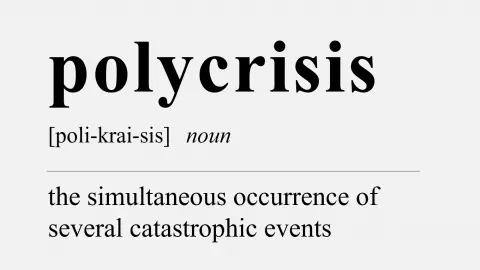Three key risks to the global outlook
How further stresses in the banking system, a failure to resolve the debt ceiling dispute, and a resurgence in European gas prices, would affect our wider economic base case
Risk 1: US bank troubles widen to several new institutions
Our base case:
The substantial deposit instability in many US regional banks has resulted in four mid-sized banks failing. The combination of the high perceived impact of higher interest rates on these banks’ balance sheets and their large uninsured deposit bases made them vulnerable to fast and extensive deposit outflows, perhaps exaggerated by social media and the ease of mobile banking.
Large US banks have remained stable throughout the crisis, and to an extent, they've been part of the solution. Stabilisation of deposits is key for the sector worries to subside. The potential changes to the deposit guarantee scheme in the US could become part of the solution in the longer term, although this would come at a cost for the sector as a whole and is unlikely to be a quick fix.
We don't rule out further problems arising in some of these smaller US banks but expect larger banks to be able to weather the storm. The European banking sector remains well capitalised and, due to the stringent liquidity rules, can withstand substantial deposit outflows with their existing buffers. Ironically, the fact that a banking union has not been finalised might currently help. We do not expect to see major liquidity events in large European banks.
Risk scenario and how it plays out:
The US bank problems have been driven by a quick loss of confidence on the part of uninsured depositors towards regional banks. If the loss of confidence were to spread quickly to impact more institutions, it could result in several banks struggling to absorb deposit outflows simultaneously. This could create worries over contagion in the system and exaggerate further deposit instability. Finding buyers for assets to safeguard depositors and operational continuity for several, although smaller, banks at the same time could pose challenges.
In the very worst-case scenario, several smaller lenders end up being absorbed by larger ones. The failing banks may, however, come with unforeseen additional risks, which may eventually result in the credit profiles of the larger acquirers weakening more than expected. If the issues are severe enough, they may pose risks to the stability of the larger acquiring banks. If markets question the wider extent of the financial system's whole stability, then severe market disturbance may arise.
Wider economic impact:
Further banking stresses would fuel a further tightening in lending standards that we’ve already seen in the US. History shows this is almost always followed by a sharp rise in the unemployment rate and would deepen the recession we already expect. While it’s uncertain whether contagion would spread directly to Europe, the prospect of a US downturn would inevitably have wider economic repercussions overseas. Central banks have so far been able to separate out financial stability and monetary policy tools, but such stresses, should they happen, are ultimately borne out of higher interest rates. This scenario would likely herald earlier and more aggressive rate cuts in both the US and Europe.
Risk 2: US fails to lift debt ceiling, triggering default
Our base case:
Politicians see sense and recognise the economic and financial damage default would cause. Government workers and creditors may get a little nervous about whether they would be paid, but concessions would be made by both sides, and the debt ceiling is raised in time.
Risk scenario and how it plays out:
House Republicans have already approved a package to raise the ceiling, but this involves significant government spending cuts that Senate Democrats refuse even to consider. They and the White House want the ceiling raised with no conditions attached, which the Republicans won’t accept. Given the personalities involved and their entrenched positions, a smooth and quick deal looks out of the question. We fear that it will take significant economic and financial market stress to trigger a climbdown from the key players, including a government shutdown and possible default.
Wider economic/market impact:
If a government shutdown and default look likely, the impact on financial markets, consumers and businesses would be huge at a time when sentiment is already fragile in the wake of recent banking failures. A default (or the material threat thereof) on just one bond would cause the rating agencies to downgrade US Treasuries. All financial products beholden to the US in any way would be at material risk for downgrade too. The dollar would suffer, and risk assets come under major pressure.
Risk 3: European natural gas prices surge
Our base case:
Fuller-than-usual European gas storage means the EU enters next winter in a strong place. Storage is currently more than 60% full, compared to around 36% at the same stage last year. Assuming a 'normal' winter, storage should be roughly aligned with the five-year average this time next year. We expect TTF natural gas to average €60/MWh over the fourth quarter of this year and €65/MWh in the first three months of 2024.
Risk scenario and how it plays out:
The European market is still structurally short gas, and demand destruction is needed to balance the market. A colder-than-usual heating season over the 2023/24 winter and the cut-off of remaining Russian pipeline flows would tighten the market and push prices above €120/MWh. However, a higher starting point for storage levels, the TTF price cap, and the potential for voluntary demand cuts becoming mandatory prevent prices from trading back to the 2022 highs.
Wider economic impact:
Experience this winter suggests the economy can weather higher gas prices, even if this resilience is highly dependent on the weather. Next winter is also likely to coincide with a period of weaker global growth and tighter corporate margins. European headline inflation stays higher for longer, though on the basis that gas prices stay well below 2022 highs, then we’re still likely to see CPI end the year much lower than current levels. However, gas prices have proved to be an important ingredient in higher services inflation and also higher wage settlements. That could mean European core CPI stays higher for longer. Stagflation will be the name of the game.
The ECB and the Bank of England will struggle to take rates much higher than in our base case, but this scenario could push back the date of the first rate cut in Europe – amplifying potential divergence between the Federal Reserve and other central banks.
Download
Download article
12 May 2023
ING Monthly: We’re in a polycrisis – and this is what it means This bundle contains {bundle_entries}{/bundle_entries} articlesThis publication has been prepared by ING solely for information purposes irrespective of a particular user's means, financial situation or investment objectives. The information does not constitute investment recommendation, and nor is it investment, legal or tax advice or an offer or solicitation to purchase or sell any financial instrument. Read more




